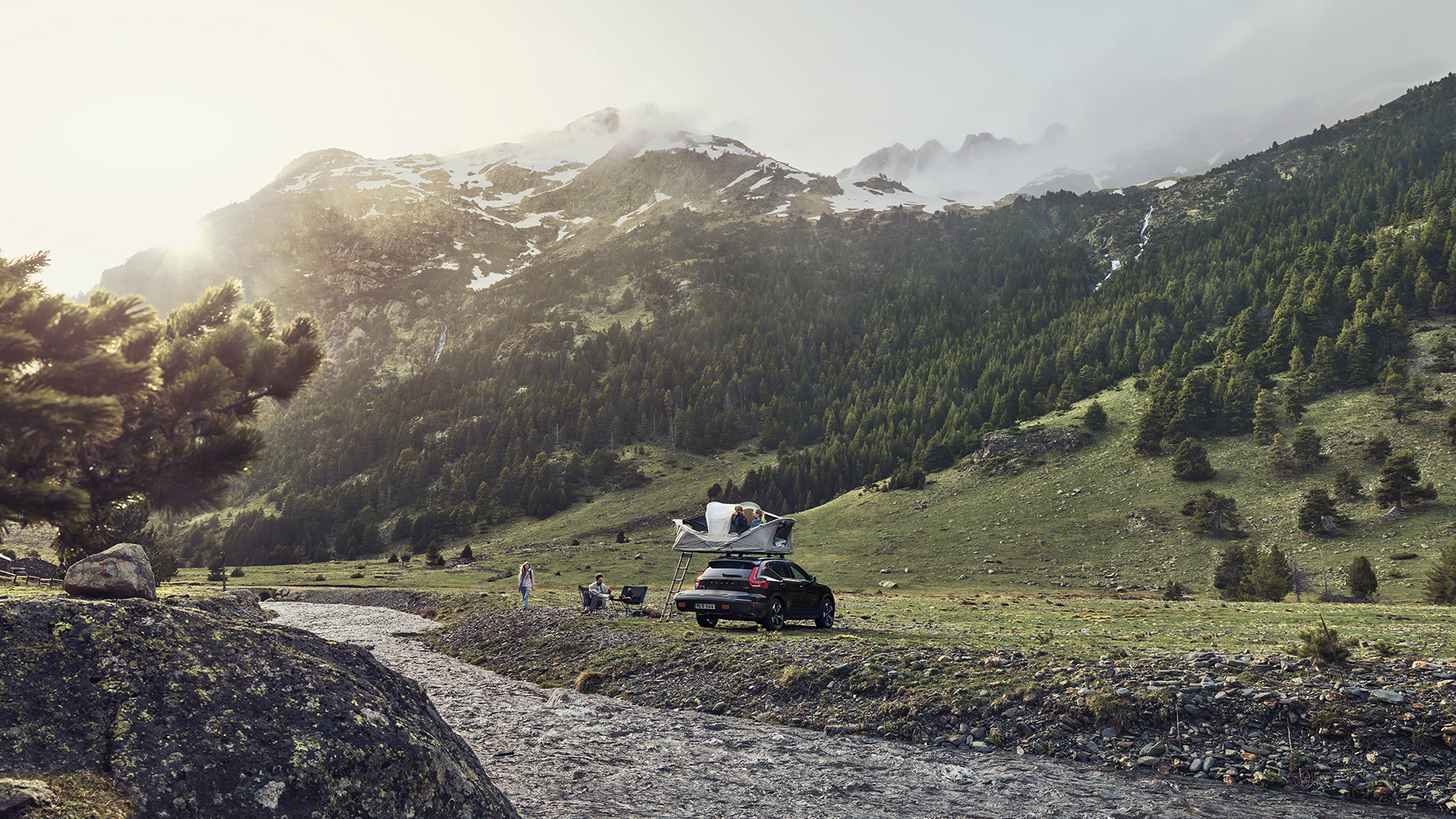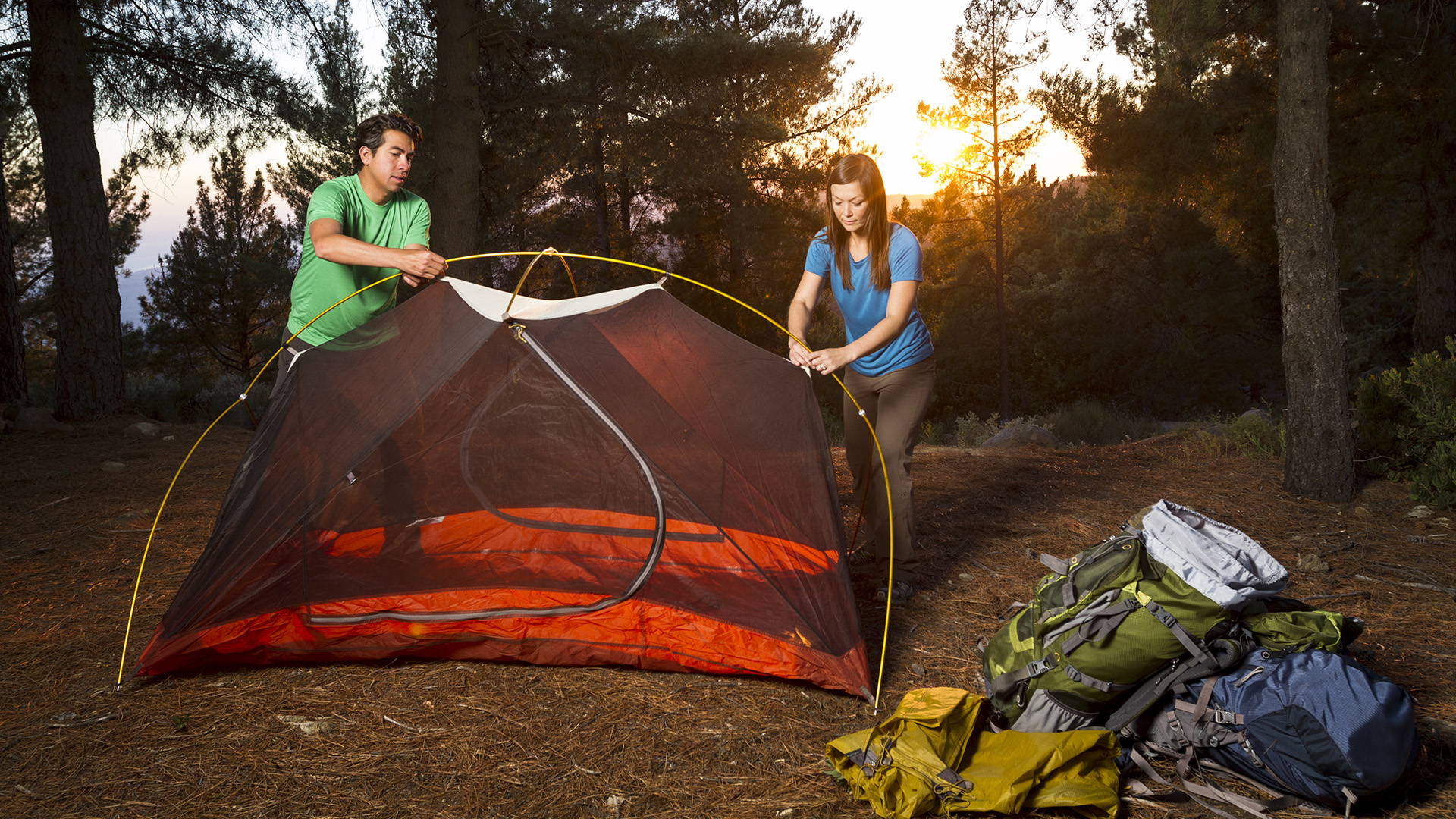I’m an outdoor expert, and these are the 5 features I look out for when buying a new tent
After trying dozens of tents in the last few years, I boiled down the key features to consider to these five.


Why sleep in a five-star hotel when you could sleep under a billion of them? You’ll never have to convince me that camping is the best night out ever – I love setting up camp in the great outdoors and walking up in the wild.
Your tent choice can make or break your experience of kipping in the fresh air, though, and anyone who has even been to a festival in a tiny, leaky, cheap design will know well that inadequate tents can make downright miserable homes-from-home.
So how can you shop for the best tent to suit your adventures? After many years of testing the best tents (and many nights under canvas), I’ve got some key features that I always look for in a good tent design. Here are the five things I always check before making my next tent purchase.
1. Shape
The most common tent shapes are dome, geodesic and tunnel tents. Dome tents, such as the Sierra Designs Meteor Lite 2, have poles that cross in the middle to create a stable, wind-resistant half-sphere structure and offer a good amount of internal space.
Geodesic tents use more poles to create a structure made up of triangles and are even more stable in extreme weather conditions, so they are ideal for mountain adventures but might be overkill for a simple campsite holiday. Probably the most famous example of this is confusingly named The North Face Summit Series 3 Metre Dome Tent(retailer link), costing £6,200.
Tunnel tents – check out Coleman’s Castle Pines 4L BlackOut Tent – use sets of poles to create a tunnel shape, usually with a living room and one or two bedrooms, and are easy to pitch but won’t stand up alone without being pegged into the ground. They usually offer more space and are good for families.
You can find more on this topic here: What are the different types of tents?
Get all the latest news, reviews, deals and buying guides on gorgeous tech, home and active products from the T3 experts

2. Size and weight
Size matters. Tents are sized by the number of adults they can feasibly sleep (i.e. two-man, four-man, six-man). My rule of thumb for tents is that if you halve that number, you’ll get the number of people the tent will actually sleep in relative comfort.
Two adults and two or three children will usually find a six-man tent the best fit, with lots of spare space for bags, clothing and cooking kit. Two people can usually share a two-man tent happily, or should pick a three-man if they have big backpacks to store. Solo camper? A one-man will be fine if you’re weight and space-conscious, but a two-man will give you more room to spread out. You definitely need one of the best backpacking tents, in general.
Think about how and where you want to use your new tent before you splurge – if you want to go on a multi-week family camping trip with the car, a large, heavy tent such as the Outwell Pinedale 6PA Air Tent with multiple rooms or a canvas glamping tent is worth the size and weight (often around 30kg) for the roomy living space you’ll get.
If you’re just off for a weekend, look for a more compact tent, and if want to carry your tent any distance on a wild camping, backpacking or bikepacking journey, pick something that weighs 4kg or less, like the 1.2-kilo Sea to Summit Alto TR2 (some backpacking tents can weigh just 700g!). If you aren’t sure how big you want to go, it’s definitely worth borrowing a few models from friends to test out first.

3. Weatherproofing
Any tent you invest in should be waterproof enough to withstand a sudden downpour. Look for a ‘twin skin’ tent – this means the tent has a separate inner layer and an outer ‘flysheet’ layer – and pick a model that has a fully waterproof fly (see also: Quechua 2 Seconds Easy Fresh & Black Popup Tent review which also happens to top our best festival tent guide).
You’ll sometimes see the waterproofness of a tent listed by its Hydrostatic Head rating – anything above 1,500mm is considered waterproof. If you’re buying a canvas tent, look for one made with water-resistant polycotton. Good tents have built-in waterproof nylon groundsheets, which stop any wet seeping in from the ground. Choose a tent with plenty of guy ropes, which you can peg out and pull, taught to keep your tent stable in the wind. Dome tents are usually more wind resistant than tunnel tents.
4. Extra features
A porch or anteroom is super useful for popping muddy boots in or for half-sitting in when cooking in rainy weather (never cook inside a closed tent). Look for a sturdy, sewn-in groundsheet with a coated nylon floor to keep you warm and dry, a waterproof rain fly, and plenty of guy ropes for stability – the Coleman Meadowood 4 BlackOut Tent is a good example.
If I’m picking a big family tent, I look for airy tents with plenty of windows and multiple doors – these stop your portable home from feeling claustrophobic. And the more loops, hooks and pockets in the tent’s interior, the better for hanging up lanterns or stashing belongings. If you’re a light sleeper, choose a tent that uses blackout material inside the bedrooms, keeping them cooler and darker and blocking out the dawn light.

5. Pitching
Pitching and packing up a tent can be a breeze – or a fiddly nightmare. As a rough rule of thumb, the bigger, heavier and fancier a tent is, the more complicated it will tend to be to pitch and may require two people to erect. That said, ‘air’ tents or inflatable tents, which feature hollow tubes instead of traditional poles and are inflated using a pump, are a great way to own a bigger, multi-room tent without the pitching nightmare. Check out the gigantic Coleman Weathermaster XL Air Tent that packs down to a size of a cool box. Whatever tent you choose, it’s a good idea to have a go at pitching it in the garden at home first to get the hang of things.

Sian Lewis is an award-winning travel and outdoors writer, author and influencer. She's the author of popular blog and book The Girl Outdoors, and when
she isn't writing or travelling she spends most of her time hiking, cycling and wild swimming across Britain, testing out the latest adventure gear and clothing as she goes.